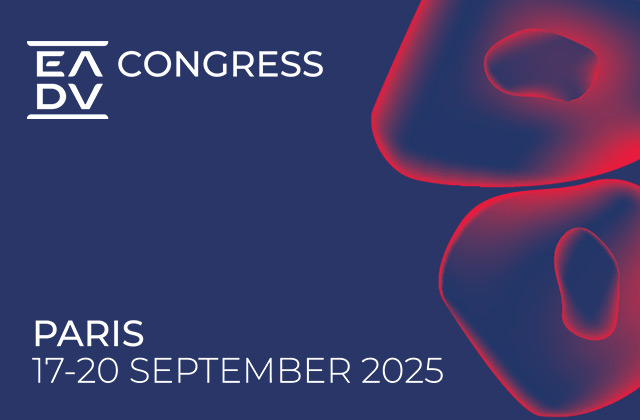
The CNS landscape is a broad one, with an exceptionally wide range of diverse disease states and related therapies. That’s one of the factors that makes CNS such a challenging therapeutic area for biopharmaceutical companies when it comes to developing and commercializing assets. That reality also makes it difficult to articulate the current state of the “CNS market” and provide an outlook for the coming year within the confines of a single article. Nevertheless, we’re going to try anyway.
This paper is becoming a bit of a tradition at Blue Matter, as each year we explore the key trends shaping the CNS market environment and provide some insight into where we think it’s heading over the coming 12 months. Of course, we can’t cover it all, but we do try to hit the key points that seem to be most salient.
During 2024 and the early part of this year, we saw some notable CNS success stories, like JnJ’s orexin receptor antagonist succeeding in a late stage depression trial, and the approval of the first non-opioid pain drug (Vertex’s Journavx). However, we also saw a fair number of prominent failures (Alto Neuro’s depression trial, Sage’s failure in Huntington’s disease, expected but still disappointing failures from Cassava and Annovis, amongst others). Together, those successes and failures reinforce the tremendous opportunity within CNS while highlighting the significant levels of risk for manufacturers working in this space. Let’s dive in and explore the situation in a bit more detail.
Alzheimer’s Disease
State of the Amyloid Hypothesis and Anti-Amyloid Therapies
The amyloid hypothesis, which suggests that the buildup of amyloid peptides in the brain is a key cause of Alzheimer’s disease, remains controversial, in spite of the groundbreaking approval of multiple amyloid-targeting therapies. These therapies – Leqembi® and its new competitor Kisunla™ (approved in July 2024) – have yet to make substantial inroads from an adoption or perception standpoint, despite their status as the only disease-modifying therapies available for Alzheimer’s patients.
The reasons are varied but revolve around the core issues of clinical efficacy and safety. Recent metadata analyses have provided further evidence that anti-amyloid therapies are neither significantly efficacious nor particularly safe due to the risk of amyloid-related imaging abnormalities (ARIA). Some manufacturers have come under fire for not being fully transparent about the risk of ARIA to clinical trial participants, which is particularly relevant to patients with two copies of APOE4, who are at highest risk of ARIA. In response to these concerns. Eli Lilly recently ran a trial to modify Kisunla’s dosing regimen in an attempt to reduce the risk of ARIA.
Because of the safety and efficacy concerns, there are significant differences of opinion amongst neurologists when it comes to their willingness to prescribe anti-amyloid therapies to their patients. Many want to see more robust data of clinical efficacy before prescribing an expensive and potentially risky therapy that their patients need to take chronically.
In addition, concerns about anti-amyloid therapies’ risk / benefit profiles have led to conflicting guidance from ex-US regulatory agencies. While the EMA initially rejected Leqembi, it has since revised that decision to reflect Leqembi’s benefit in a restricted patient population (patients with one or no copies of APOE4). However, the UK’s cost-effectiveness agency, NICE, has shared draft guidance indicating that the limited benefits of the drug do not justify its cost
Last year, when we published CNS Market Outlook 2024, we wondered how the healthcare system would respond to the introduction of high-cost disease-modifying therapies (DMTs) for the millions of people living with Alzheimer’s disease in the US. In particular, we questioned how Medicare budgets, PET capacity, and neurologist shortages would be impacted. Due to the limited uptake of these therapies, these concerns seem to be overblown (at least for now). However, this will be an area to monitor as additional data is generated and clinical consensus around how to use these therapies builds.
A rare bright spot in the amyloid space has been the data from trontinemab, Roche’s new anti-amyloid “brain shuttle” therapy. Based on early clinical data, it seems to be able to clear amyloid without increasing the risk of ARIA. However, it remains to be seen whether this therapy can pair a safer profile with a more substantial impact on clinical outcomes in Alzheimer’s disease. After all, slowing—or even reversing—disease progression is the “holy grail” in this space.
One other thing to watch: Leqembi has a PDUFA date for the subcutaneous (SC) formulation for maintenance dosing coming up in the third quarter of this year. While this formulation would be more convenient for patients and their caregivers, questions remain about this elderly population’s ability to adhere to an SC dosing regimen, and the potential impact of a new formulation on neurologists and their practices.
Beyond Beta Amyloid
Even though the clinical impact of targeting amyloid remains a bit murky, the mixed evidence on tau and other mechanisms of action (MOAs) haven’t yet proved that there’s a compelling alternative treatment approach. Again, the picture seems to contain various shades of gray, as there was a mix of notable failures (such as those from Cassava Sciences and Athira Pharma) combined with promising results from Allyx Therapeutics, as it continues to advance its mGluR5 modulator ALX-001 through development for treatment of Alzheimer’s and Parkinson’s.
In last year’s article, we spent some time discussing tau as a clinically relevant target for AD. While there have not been many big developments in this area, research regarding the effectiveness of targeting tau continues. Some interesting preclinical work seems to show that intracellular tau targeting could be efficacious.
Most notably, and like some other therapeutic areas, GLP-1 agonists are making their debut in Alzheimer’s. Multiple phase 3 studies are ongoing to determine the impact of GLP-1s on Alzheimer’s disease, including EVOKE and EVOKEPlus, which focus on semaglutide. While some early data has suggested that GLP-1s can have a positive impact for these patients, the biological mechanism of this impact is unclear, with preclinical research demonstrating that semaglutide and tirzepatide do not seem to meaningfully alter Alzheimer’s pathology, behavior, or cognitive function in preclinical models. We look forward to seeing more data this year, as any evidence of clinical benefit in Alzheimer’s will surely lead to even greater interest and investment in these already blockbuster-status obesity treatments.
Era of Neuroimmunology
In last year’s paper, we neglected to highlight the substantial activity that is currently happening in the field of neuroimmunology, which focuses on the interactions between the immune system and the central nervous system. Basic science is increasingly recognizing the immune system’s critical role in the development and progression of neurological disorders. In addition, neuroimmunology is an area that has applicability across multiple CNS disorders, which is rare due to the tremendous heterogeneity within the category.
Clinical development in neuroimmunology has been focused primarily on autoimmune diseases that manifest neurologically, with multiple sclerosis (MS) being the most prominent example. Other areas of recent activity include myasthenia gravis (MG) and chronic inflammatory demyelinating polyneuropathy (CIDP).
This category has also benefited from the tremendous interest in immunology and inflammation that has come about as a result of translating novel oncology MOAs (such as CAR-T) to the autoimmune space. While MS is the most well developed market in the neuroimmunology space, below are a few notable targets and programs that represent other novel approaches:
- Argenx is one of the leaders in this space, with its FcRN drug Vyvgart® in MG and CIDP. It has a broad portfolio of other molecules focused on a broad range of diseases, including neuroinflammatory ones like multifocal motor neuropathy (MMN).
- Immunovant is also focusing on targeting FcRN in MG and CIDP. The company hypothesizes that its molecule can provide deeper immunoglobulin G (IgG) reduction, leading to improved efficacy. They are also looking to improve convenience with an autoinjector formulation. Data from these programs is expected later this year.
- Kyverna is aiming to become the first company to bring CD19 CAR-T to a neurological indication with its programs in stiff person syndrome (SPS) and MG. The company expects to complete SPS pivotal trial enrollment in 2025, and to read out interim data from its phase 2 MG trial in the second half of this year.
While the above companies have only a subset of their portfolios dedicated to neuroimmunology, Annexon Biosciences is a company purely focused on the neuroimmunology / neuroinflammation space. Its lead program in Guillain-Barré Syndrome (GBS) had a positive readout in June of 2024, and the company is expected to file the BLA for ANX005 in GBS in the first half of this year.
While neuroimmunology players have primarily focused on the autoimmune space so far, the next wave is close behind, with a focus on the immune / inflammatory component of neurological diseases such as Alzheimer’s and other neurodegenerative diseases.
In this second wave, TREM2 is one of the most notable targets, with both Alector Therapeutics and Vigil Neuro developing molecules targeting this protein, which is thought to play a role in the brain’s ability to clear pathological debris and protect neurons through microglia (immune cells in the brain and spinal cord). While the Alector TREM2 program unfortunately failed last year, Vigil’s phase 1 study of its TREM2 molecule in Alzheimer’s read out favorably, and the company is expecting to initiate a phase 2 study in this population in the third quarter of this year. Vigil’s TREM2 agonist is a small molecule (vs. Alector’s monoclonal antibody), so it remains to be seen whether the modality difference between the two approaches will translate into a difference in clinical efficacy.
A Tale of Two Muscarinics
KarXT (Cobenfy™)
No CNS market outlook can ignore the significance of the approval of KarXT—now Cobenfy™—for schizophrenia in September of 2024. This approval brought the first novel mechanism (muscarinic agonists) to schizophrenia in decades, and was anticipated to address significant remaining unmet needs in the disorder (in particular, the ability to address negative symptoms). Check out our paper from last year that dives deeper on this novel class of molecules and their potential impact in schizophrenia.
The main question now is whether Cobenfy’s uptake will justify the substantial premium that BMS paid to acquire Karuna Therapeutics in late 2023. We will likely have to wait until BMS’ Q4 earnings call to start answering this question more fully. However, we anticipate that Cobenfy will face numerous challenges to uptake, including entrenched neurologist prescribing habits, a lack of data in comparison to atypical antipsychotics, challenges to adherence to its twice-daily dosing regimen, and payer requirements to step through generic atypical antipsychotics, among others.
In this immediate post-launch period, Cobenfy is likely to be an option for those patients who do not respond fully to atypical antipsychotics or cannot tolerate some of the side effects, such as weight gain and sedation. Nevertheless, BMS is going “all in” on Cobenfy as a pipeline in a pill, with additional readouts in 2025 in Alzheimer’s disease psychosis and as an adjunctive treatment for schizophrenia, as well as other planned studies in bipolar disorder, Alzheimer’s disease agitation, and irritability associated with autism (amongst others).
Emraclidine
Another high profile acquisition that centered around a muscarinic agonist (emraclidine) was Abbvie’s acquisition of Cerevel Therapeutics in late 2023. However, Abbvie announced in November of last year that emraclidine had failed to meet its primary endpoints in two phase 2 schizophrenia studies. That was not only a hit to Abbvie’s ambitions in schizophrenia, but it also cost the company a $3.5 billion impairment charge.
While the reasons for the failures are unclear, many have speculated that the higher-than-expected placebo response in the trials made it more difficult for emraclidine to demonstrate a clinical benefit. In addition, it’s possible that emraclidine’s distinct way of targeting muscarinic acetylcholine receptors (it is a positive allosteric modulator of the M4 receptor, while Cobenfy is an M1/M4 orthosteric partial agonist) may have contributed to the disappointing results.
As an aside, It hasn’t been all bad news for the Cerevel acquisition. Cerevel’s Parkinson’s disease (PD) drug (tavapadon) met its primary and secondary endpoints in a phase 3 study, and Abbvie is preparing to submit an NDA for this indication later in 2025.
Looking forward
Neurocrine Biosciences and MapLight are the other prominent players in the muscarinic space. Neurocrine plans to start a phase 3 program in schizophrenia with its M4 agonist, NBI-568 later this year. Meanwhile, MapLight completed a phase 1 study for its muscarinic agonist program and is planning on initiating phase 2 studies in schizophrenia and Alzheimer’s-related psychosis later this year.
In summary, it remains to be seen whether Cobenfy or emraclidine ends up being the outlier within this emerging class of therapies. For now, we know that Cobenfy has the schizophrenia market to itself.
“Quick Hits”
Stem Cell Therapy in CNS
Stem cell therapy has long been hypothesized to have therapeutic potential in CNS, as many CNS disorders—particularly neurodegenerative ones—are mediated by the loss or dysfunction of specific cell types in certain parts of the brain. While many classical therapeutic approaches seek to prevent or slow down these degenerative processes, they are often insufficient. This is because patients often do not get their diagnosis until a significant period has elapsed. In such a case, the patient can lose so many relevant neurons that when the correct diagnosis is finally made, there just isn’t much left to save.
Stem cell therapy contains the promise of reversing that damage because it offers the potential of replacing lost neurons with new, functional ones. The concept is quite simple. However, the execution has been tremendously challenging for a variety of biological and political reasons, with much of this concept being limited to testing in the preclinical, academic setting.
Last year seemed to be a bit of a watershed moment for stem cell therapy, with two companies making significant advances in this space. The first is Neurona Therapeutics. The company is developing a cell therapy designed to replace neurons that secrete the inhibitory neurotransmitter GABA, These neurons are dysfunctional in patients with epilepsy, leading to hyper-excitable neural networks which can create seizures.
The therapy is derived from human pluripotent stem cells and consists of fully-differentiated interneurons that are implanted into the brains of patients with mesial temporal lobe epilepsy (MTLE). In a recent phase 1 study, patients receiving the therapy experienced a long-lasting reduction in seizures. Given those promising results, Neurona plans to initiate a pivotal study in the second half of this year.
Another company in this arena is BlueRock Therapeutics. BlueRock is developing a cell therapy that’s designed to replace the dopamine-producing neurons that are lost in Parkinson’s disease. It involves implanting dopaminergic neuron precursors into the brain of a person with Parkinson’s disease. The idea is that these precursors—which are derived from human pluripotent stem cells—will then develop into mature dopamine neurons after implantation. Based on promising results from a phase 1 study, BlueRock is planning to initiate a phase 3 clinical trial for the allogeneic stem cell-derived therapy in Parkinson’s disease in the first half of this year.
Both Neurona and Bluerock have received the FDA’s Regenerative Medicine Advanced Therapy (RMAT) designation, which enables their clinical programs to receive expedited development reviews and planning guidance from senior CBER managers. We look forward to seeing additional advances from these clinical programs in 2025 and beyond.
Blood Brain Barrier (BBB) Delivery
If you read our paper on development and commercial challenges in CNS, you might remember that we identified treatment delivery as a key challenge for manufacturers in the CNS space. We noted that the brain is uniquely protected by the BBB, which allows only certain essential substances such as oxygen, glucose, and amino acids to pass through. This protects the brain from potentially harmful substances that may be present in the bloodstream. However, it can also prevent many therapeutics from entering the central nervous system.
Nevertheless, we are seeing significant innovations in the area of BBB delivery. Researchers are harnessing an understanding of the BBB’s biology to develop ways to direct macromolecules like monoclonal antibodies to the brain.
Let’s check out a few notable examples. First is Denali Therapeutics’ TransportVehicle (TV) brain delivery platform. It focuses on using the transferrin receptor to enable multiple classes of therapeutics to cross the BBB, including enzymes, oligonucleotides, and antibodies. The company has leveraged the TV platform for its Hunter syndrome therapy, tividenofusp alfa, which is slated for a BLA submission in the first quarter of this year.
Aliada Therapeutics provides another example. In addition to its anti-amyloid antibody for Alzheimer’s disease, Aliada also has a BBB-crossing platform that leverages transferrin and CD98 receptors. In one of the few notable merger and acquisition (M&A) events of 2024, AbbVie announced its planned acquisition of Aliada in October.
Roche’s trontinemab, which we mentioned earlier, also leverages BBB-crossing technology. In this case, it uses an anti-transferrin receptor “brain shuttle” conjugated to an anti-amyloid antibody. Our hope is that these advances unlock the ability to target a much broader array of therapeutics to the central nervous system without resorting to invasive techniques such as intrathecal delivery.
Looking Ahead…
As this year moves forward, our team will be monitoring all the trends, companies, and therapies mentioned above. Throughout 2025, we will publish additional articles and papers on relevant issues and challenges in CNS. It’s a broad and fascinating field, with a lot of activity! Follow Blue Matter on LinkedIn or check our blog regularly to get the latest. If you’d like to discuss issues related to corporate, portfolio, or product strategy in CNS, then please contact us via our website and we’ll be glad to schedule a call.






